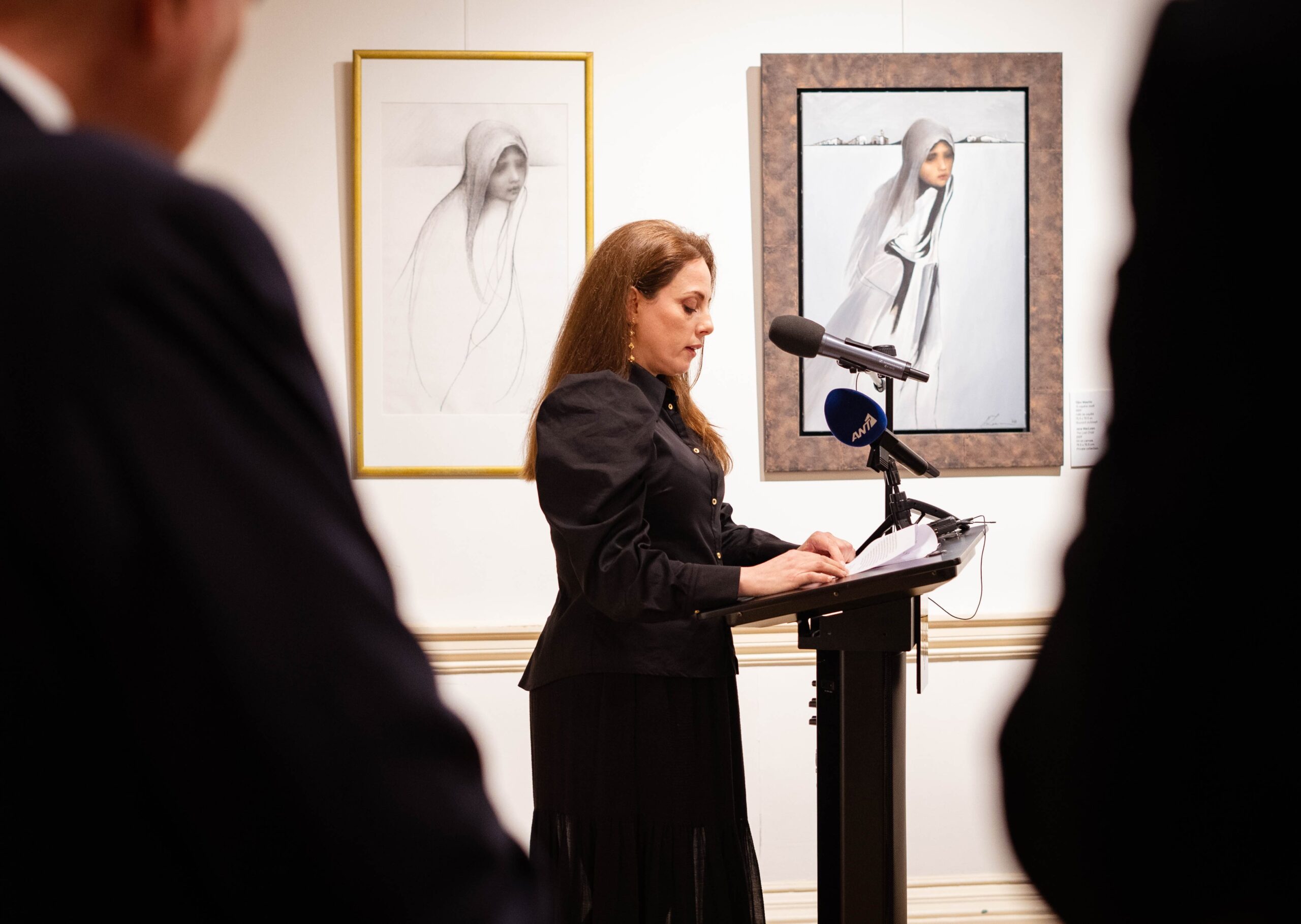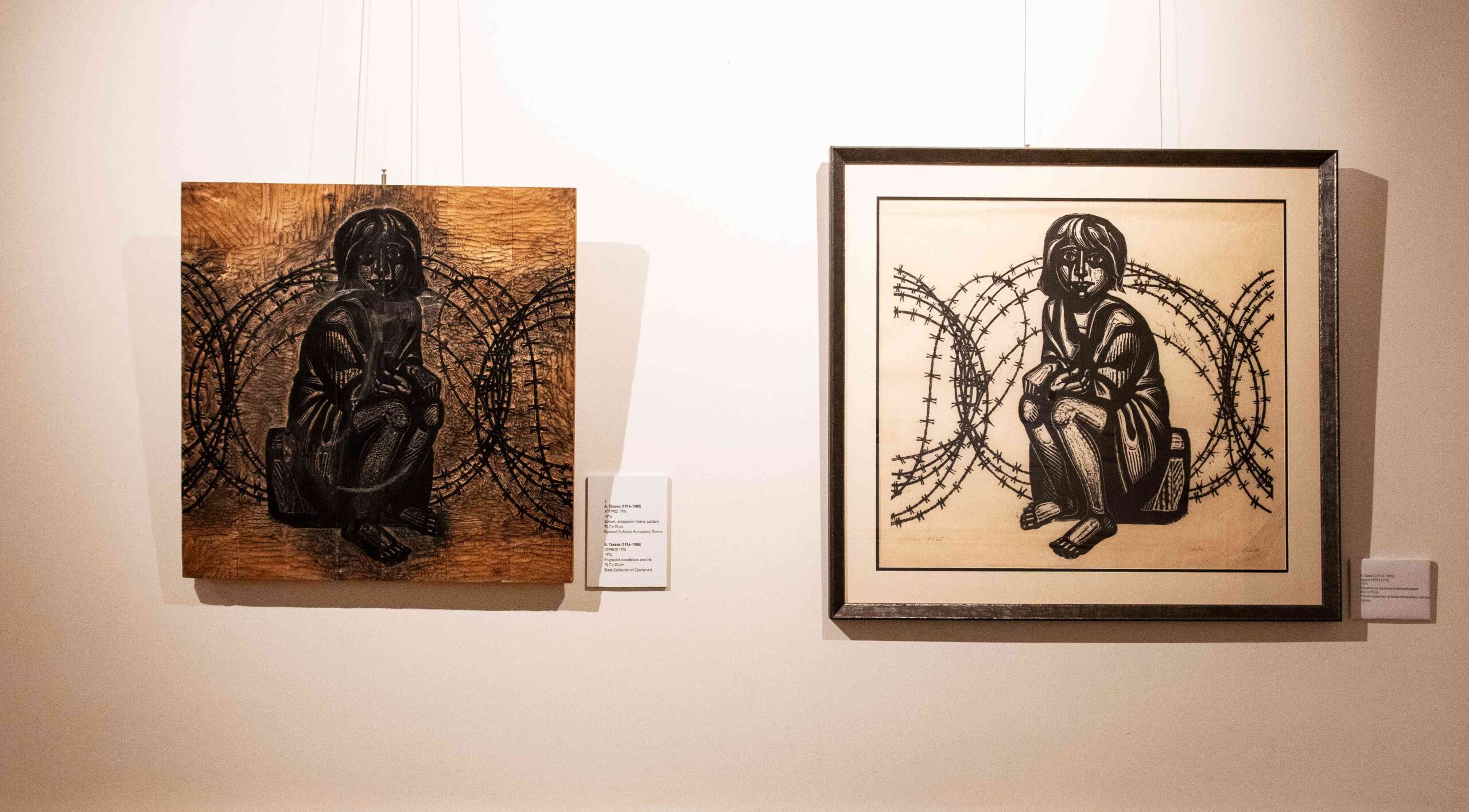PROSFIGOSIMO: A stamp for the refugees of Cyprus. The story of a symbol
An art exhibition entitled “PROSFIGOSIMO: A stamp for the refugees of Cyprus. The story of a symbol” was hosted between 24 January to 2 February by the High Commission of Cyprus in the United Kingdom with great success. The exhibition, inaugurated on Wednesday evening 24/1/2024 at the House of Cyprus in London, was dedicated to the Refugee Stamp of Cyprus, instituted by the island’s Government soon after Turkey’s invasion in 1974. The stamp features an exceptional work of art that has had a major impact on the culture of Cyprus during the last five decades.
The opening of the exhibition, curated by art historian Maria Paphiti, was held by the Cyprus High Commissioner, Mr. Andreas S. Kakouris, in the presence of ambassadors, mayors, councillors, FCDO representatives, members of the Cypriot diaspora and friends of Cyprus.
In his address, Mr. Kakouris highlighted the emotional charge and importance that accompanies the presentation of Prosfigosimo’s history, as well as its practical use, with the collection of money for refugees and those directly impacted by the invasion of Turkey in Cyprus.
“The ‘Prosfigosimo’ marked the psyche of all Cypriots. It became an image that is indelibly carved in our souls, as it represents the collective effort of the Cypriot population to help each other. It does not signify charity, it showcases resilience”, the High Commissioner noted, adding that “2024 marks 50 years since the Turkish invasion in Cyprus in the summer of 1974, when over 200,000 Cypriots became refugees. The equivalent number in the UK would be over 20 million. Numbers like that mean no one is unaffected.”
The artworks presented in the exhibition document the process through which the Refugee Stamp was created, based on archival and philatelic material, as well as relevant artworks. It showcases the original woodcut of Tassos Alevizos (1914-1985) and demonstrates its impact on the artistic production of Cyprus over the last fifty years.
The curator Ms. Paphiti said, “The Refugee Stamp was introduced by government decision on 12 September 1974 and its purpose was to contribute financially to the relief of all people displaced due to the Turkish invasion of 1974. Its symbolism and messages remain intact and relevant, since those people are still refugees. Its presence is identified with the lives of those Cypriots, who are still refugees in their own country. The Refugee Child of A. Tassos, the “Kypriotaki” (little Cypriot), as he called it, remains their most faithful and unwavering witness.”
The curator mentioned that “the exhibition provides a visual narrative of the establishment and evolvement of the Refugee Stamp and its significance for Cyprus, both as a symbol of the island’s modern history and as a means of enlightenment about the ongoing consequences of the Turkish invasion,” adding that it includes a selection of artworks that display also the consequences of contemporary refugeeism, demonstrating that pain and loss, primordial expressions of human nature, remain unchanged, regardless of time and place.
The exhibition included emblematic paintings and engravings by one of the “fathers of Cypriot art”, Telemachos Kanthos (1910-1993), the renowned artists Lefteris Economou (1930-2007) and Andreas Ladommatos (1940) and prominent contemporary artists, such as George Gavriel (1959), Michalis Kountouris (1960), Lia Lapithi (1963), Andreas Nicolaou (1966), Panayiotis Pasantas (1971), Elena Sarri Varnava (1956), Jane MacLean, Katerina Christodoulou (1960) and the George Pantazis (1965-2023). Many of the artworks displayed derive from photographs of the popular London-based, Doros Partasides (1944), who was at the forefront of war as a photographer and cameraman of the CyBC in 1974 and also participated in the exhibition with further material.
During the opening event, the distinguished Cypriot psychologist, Dr. Linda Papadopoulos, recited Cypriot poetry relevant to the exhibition.
Legal Disclaimer:
EIN Presswire provides this news content "as is" without warranty of any kind. We do not accept any responsibility or liability for the accuracy, content, images, videos, licenses, completeness, legality, or reliability of the information contained in this article. If you have any complaints or copyright issues related to this article, kindly contact the author above.



